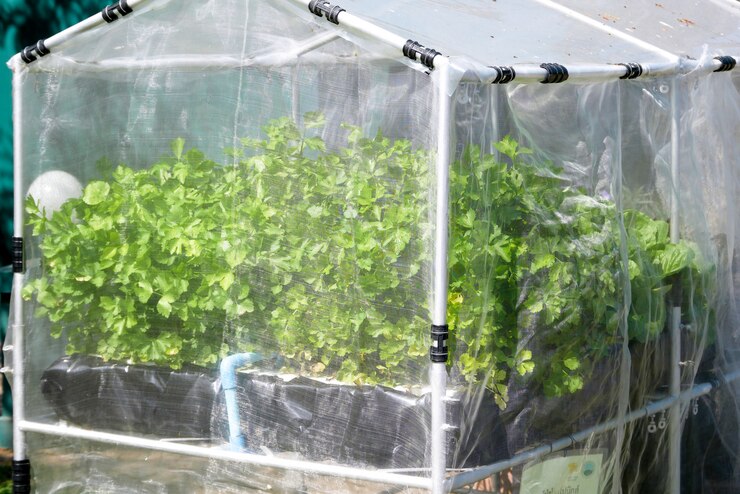The advent of greenhouse plastic transformed the way crops are grown, particularly in places where the weather is unpredictable. The discusses the fundamentals of 7 most proven benefits of greenhouse plastic, an essential read for every modern and efficient farmer. If you are a large-scale grower or you simply have a backyard garden, you need to be aware of some of the benefits of plastic to decide if they will meet your specific agricultural needs.
What’s more, with the greater food demands and climate challenges, it has never been a more crucial time to save the plants. Whether you need to extend your growing season, or practice year-round cultivation, or even protect your precious flower beds, the green house will provide you the ideal environment to make your flowers and plants to survive the coming cold weather. In this post you will learn the reasons why you need to have greenhouse plastic.
Extended Growing Seasons
One of the greatest assets of greenhouse plastic is the fact that it can help extend your growing season. This means that farmers can sow early in spring and reap late in the fall.
Protection against Weather and Longevity of Crops
Greenhouse plastic protects from frost, wind and rain. It keeps warm air in, so crops are cocooned in a stable microclimate. This consistent climate enables rapid germination and better growth, it increases productivity.
An Example from Real Life: Early HarvestScheduling
In Southern California, small-scale growers have started tomato and pepper plants weeks before the outdoor planting season starts using 6 mil UV resistant greenhouse plastic. And so they have the advantage of getting early harvests and better market prices.
Improve in Quantity and Quality of Crop
Another benefit about greenhouse plastic is the fact it can enhance crop yield and quality. Plants are more constant, when protected from pests and bad weather.
Faster Plant Growth for a Healthier Garden
Plants under greenhouse plastics Stress on plants is minimized under greenhouse plastic. Irrigation use of less exposure to swings in temperature and to water loss means that crops are healthier and grown more robustly. This results in more and better crops.
Supporting Data on Yield Increase
Polyethylene greenhouse covers allowed field-grown leafy greens and berries to have up to 30% higher yields compared to open-field production, as reported by University of California Agriculture and Natural Resources in 2023.
Pest and Disease Control Done Right
Greenhouse plastic can also help with pest management and the prevention of disease; an important consideration in organic and sustainable farming.
REFINEMENTS: Fewer chemicals; safer food
Physical barriers also makes it harder for harmful insects and airborne diseases to get to plants. This cuts down on pesticide use, allowing farmers to meet organic guidelines, and makes for safer produce.
Applications of Plastic in Pest Control
For instance, mesh-reinforced plastic covers can exclude insects such as aphids and whiteflies, which can spread pests in crops such as lettuce and cucumbers. Some greenhouse plastics also are treated for anti-drip, which helps reduce moisture buildup that can lead to mold and mildew.
Conclusion
The virtues of greenhouse plastic are obvious: It amplifies the growing season, increases crop yields and quality, and mitigates pests and diseases. To growers who face unpredictable weather and market pressures, greenhouse plastic offers an easy, reliable, and affordable way to boost productivity and make the production environment more sustainable.
By recognising and taking advantage of these time-tested benefits, farmers and gardeners can maximise their growing spaces and achieve quicker results. As farming advances, greenhouse plastic is a fantastic solution for savvy, resourceful cultivation.
FAQsFrequently Asked Questions (FAQs)
What is greenhouse plastic for?
Greenhouse plastic is the material used to cover the outside of a greenhouse and, under certain conditions, a hoop house, protecting plants from the weather, pests and changes in temperature.
What role does greenhouse plastic play in growing crops?
It establishes a steady, warm environment to encourage faster growth, higher yields and better quality of crops.
Can greenhouse plastic cut pesticide use?
Yes, it does keep pests out and acts as a physical barrier, so you will have less need for chemicals.
Is greenhouse plastic reusable?
Many types, particularly the UV-resistant ones, will last several seasons if cared for properly.
